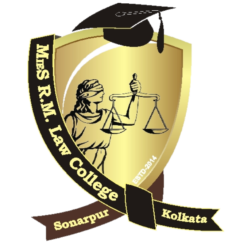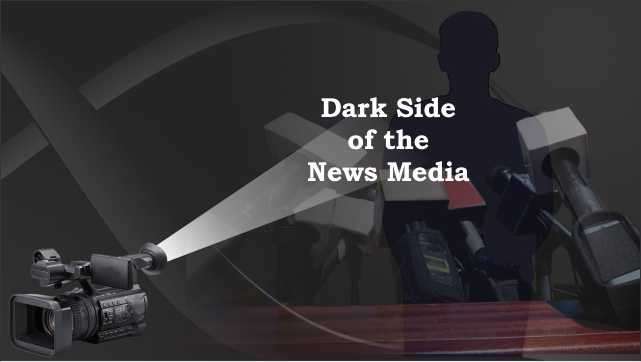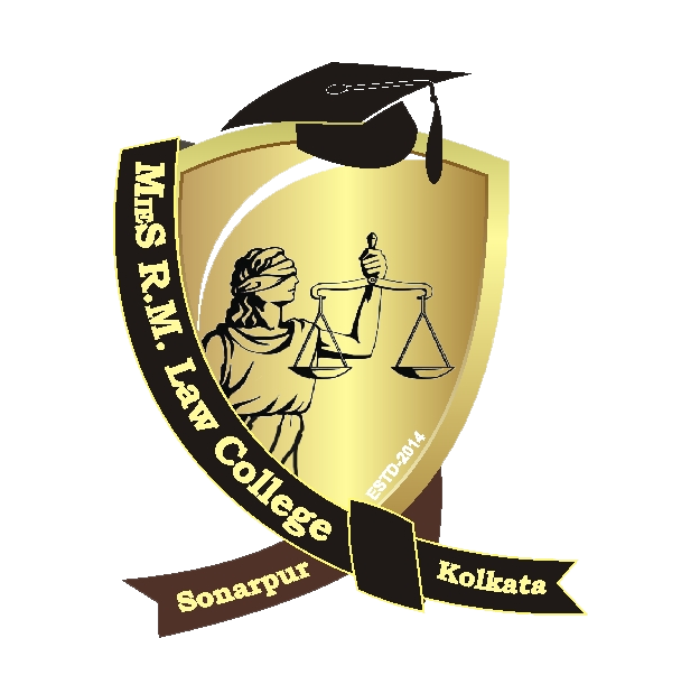The Dark Side of News Media
An article on “The Dark Side of News Media” has been written by Debasmita Deb of MIES R M Law College, which is one of the top and best law colleges in West Bengal. Law is important for society because it is a standard of conduct for all Indian citizens. Studying law in India offers a myriad of opportunities and advantages for aspiring legal professionals. Moreover, with a robust legal system in place and increasing demand for qualified professionals, a law degree from a reputed law college like MIES R.M. Law College can open doors to a rewarding and fulfilling career.
MIES RM Law College set up one of the best modern equipped premier Law College in Sonarpur, South Kolkata. MIES R M Law College, Kolkata has completed many years with its brilliant journey providing the best Indian Law Education possible to future lawyers, advocates, and law officers. They conduct Hon’ble High Court and Hon’ble Supreme Court / Apex court visits for its Students. MIES R M Law College is one of the topmost renowned Law Colleges in India under Vidyasagar University and approved by the Bar Council of India.
THE DARK SIDE OF NEWS MEDIA
Who is the real criminal? all that glitters is not gold.
Debasmita Deb
Abstract
This paper represents the Indian media activity. Mass media is a significant force in modern culture. Mass media is a communication whether it can be written, broadcasted, or spoken which reaches a large audience. This includes radio, television, advertising, newspapers, magazines, movies, the Internet, etc. Media is essential for growth, fair reporting, and social justice for every nation. However, we have seen a huge crisis started in Indian media in the past few years. The press indeed has freedom but sometimes they forget about their limitations.
India has become unstable in its Three Pillars i.e., Executive, Legislature, and Judiciary. The media or press has emerged as the Fourth Pillar through the rights guaranteed under Article 19 of the constitution of India. Article 19(1)(a) of the Indian constitution protects the right to free speech and expression irrespective of the medium of communication. There are so many statutes available in media laws such as The Newspaper (Press & Pages) Act, of 1956, the Defence of India Act, of 1962, the Press Council Act, of 1978, etc. Media indeed has a lot of power, but that power is being misused. From this paper we can get so many perspectives on media like the power given by the Constitution and statutes, misuse of that power, and solutions to get rid of fake updates, news, and disinformation.
Keywords: Mass media, Media Laws, Indian Constitution and statutes, Disinformation, Fourth Pillar, Investigative Journalism.
Introduction of THE DARK SIDE OF NEWS MEDIA
Media is a captivating universe. Literally, media is referred to such a platform from which any information is shared. The main work of media is to gather the information from the sources and after that spread it to the public. Press or print media, broadcast media, and social media are some common examples of media. Media actually plays a very important role in the development of the nation but at present days, we can see that when they start taking matters into their own hands and start acting like a court then the problem begins. Nowadays the news channels, social media, and even the print media tend to be biased while reporting any news by making it flashier to attract the viewer to increase their business.
It has to be mentioned that the mass media is totally controlled by the Government as well as Political Parties, which forces the media to project only what they want the public to see. If this continues, society will soon go to the abyss.
Media Laws
There are so many laws that regulate the performance of media in India. Law is the bundle of rules that regulate codes and conducts of human behaviors. Likewise, Media Law is the set of rules that regulate the conduct of media and also protects their freedom[1]. It is an integral part of the democratic society.
Historical Background of Media Law
The media regulations of India have a lengthy history. The historical background of the media law of India will be discussed in 2 parts for easy understanding[2].
- Before Independence
- After Independence
Before Independence:
At the very first, Lord Wellesley prescribed Press Regulations in the year 1799. Then the government declared the ‘Gagging Act’ on 18th June of 1857. “The Proclamation of Queen Victoria (1958)” solidified colonial control in India and completely eradicated the concept of press freedom. This time, there was no idea of pre-censorship or press content licensing prior to the imposition of colonial rules. The ‘Press and Registration of Books Act’ was passed in 1867 and is still in force. The ‘Sedition Statute imprisoned several Indian journalists from ‘Swarajya Press’ and independence activists through the use of IPC section 124-A in 1870. 10 press freedom was again curtailed.
After Independence:
After the independence of India, the existing media law was the subject of an investigation and suggestion from the ‘Press Law Enquiry Committee’, in 1947. Section 124-A of the IPC was amended and the ‘Indian Press (Emergency Powers) Act’ and ‘Foreign Relations Act’ were repeated. Both the Post Office Act of 1898 and the Telegraph Act of 1885 were amended. The establishment of the ‘Press Commission of India, in 1952’ resulted in the growth of the ‘Press Council of India’.
Constitutional Provision
The constitution of India does not provide freedom for media separately but there is an indirect provision for media freedom. It is derived from Article 19(1)(a). This article guarantees freedom of speech and expression. The freedom of mass media is derived indirectly from this article.
- List of Statutes –
- The Press and Registration of Books Act, 1867
- Registration of Newspapers (Central) Rules, 1956
- The Press and Registration Appellate Board (Practice and Procedure), 1961
- The Press Council Act, 1978
- The Working Journalists and Other Newspaper Employees (Conditions Service) and Miscellaneous Provisions Act, 1955
- The Newspaper (Price and Pages) Act, 1956
Trial by Media
Trial by Media is a phrase that has been popular from the lead 20th century and early 21st century to describe the impact of television and newspaper coverage on a person’s reputation by creating a widespread perception of guilt or innocence before or after a verdict in the account of law.
In recent times there have been numerous instances in which the media has conducted the trial of an accused and has passed the verdict even before the court passes its judgement.[3]
Impact of Media Trial
- Right to privacy: Many persons lose their constitutional rights for media trial, please. Moreover, they invade their privacy which causes a breach of the right of privacy guaranteed under Article 21 of the Indian constitution
- Not good for democracy: Nowadays we have seen that the media has breached its responsibility by taking democracy 2 steps backward, affecting people and harming the system.
- Wrongful portrayal: At present, the media has been successful in portraying wrongful events that have to be kept a secret. Media trials have caused wrongful portrayal of alleged accused and destroyed careers by the fact that they were accused, even though they have not yet been portrayed guilty by the court of law.
- Instigate hatred and violence: Paid and fake news can ruin a person’s life, manipulate public perception, and instigate hatred violence, and disharmony in society. Therefore, the absence of objective journalism leads to the false presentation of truth in a society which affects the perception and opinions of people.
- Negative impact on judicial functioning: Media trial also affects judicial functioning. Misinformed biased and agenda-driven debates in the media on issues pending in courts are affecting justice delivery.
- Unable to distinguish fake and real news: This is very hard to distinguish between fake and real news so
- media trials cannot be a guiding factor in deciding cases.
Case Studies where needless exaggerations of Media Trials were exposed
| Case | Verdict Year |
| Ayodhya Dispute | 2019 |
| Neeraj Grover Murder Case | 2011 |
| Sanjay Dutt Case | 2013 |
| Sushil Sharma vs The State (Delhi) | 1996 |
The above-mentioned cases are popular examples out of many cases where the Honourable Court has given its verdict on the basis of the evidence available on record instead of accepting news items.
Conclusion & Suggestion against the DARK SIDE OF NEWS MEDIA
The body that regulates and governs the media and entertainment sector in India. It is enshrined in the Cable Network Act, of 1995 and the Prasar Bharti Act, of 1990. These are controlled by the Ministry of Information and Broadcasting and Prasar Bharti. There are 4 bodies in India for media regulation such as –
- Press Council of India
- News Broadcasting Standards Authority
- Broadcasting Content Complaints Council
- News Broadcasters Federation
Media should understand their limits
Media should understand their limits. At present their unjustified news reporting & fake news creation have brought a very unfortunate situation in society. That has a bigger impact on its growth & well-being. Nowadays we can see that e-papers and e-news create so much fake news and the readers are getting influenced by those fake news and updates. It is not possible for the readers or listeners watching or reading the published news to identify whether a piece of news is true or fake. Therefore, the media has to be very honest in its news generation.
Media should be a voice for those who cannot protest for themselves. The media should not deliver judgment because we have a judiciary to solve this purpose. Media should only engage in acts of journalism and not act as a special agency for the court.
Our take
Lastly, the media should maintain its code of laws and ethics to become more socially responsible by not interfering in the matters of court. Instead, they should do the research. Keep a check on high-profile cases. Find the evidence, and keep it to them until and unless they find the truth is getting suppressed.
MIES R M Law College is one of the law colleges in south Kolkata which provides three-year LL.B degree courses. MIES R M Law College (Under the MIES R M Foundation Trust) has the most experienced and highly qualified faculties. Moreover, that includes Ex-Professors of Calcutta University as visiting faculties. The structure of the syllabus in MIES R M Law College is highly comprehensive. Nevertheless, it covers all essential subjects for a complete law education. This is one of the top law colleges in West Bengal.
[1]Thiruthi. A. iPleaders. Media Law as an emerging attractive career. September 26, 2021. https://blog.ipleaders.in/media-law-as-an-emerging-attractive-career. May 05, 2022.
[2]Kumar.Mukesh. tutorials point.History of Media Laws in India.March 13, 2023. https://www.tutorialspoint.com/history-of-media-laws-in-india. May 05. 2023.
[3]Rajagopal.Krishnadas.Media is running kangaroo courts: CJI Ramana. July 27, 2022. https://www.thehindu.com/news/national/media-is-running-kangaroo-courts-cji/article65673959.ece.May 05, 2023






Wow, awesome blog layout! How long have you been running a blog
for? you make running a blog glance easy. The overall glance of
your website is magnificent, let alone the content!
You can see similar: najlepszy sklep and here
e-commerce
Wow, amazing weblog layout! How lengthy have you been blogging for?
you made running a blog glance easy. The whole look of your web site is great, let alone the content!
You can see similar: sklep internetowy and here sklep internetowy